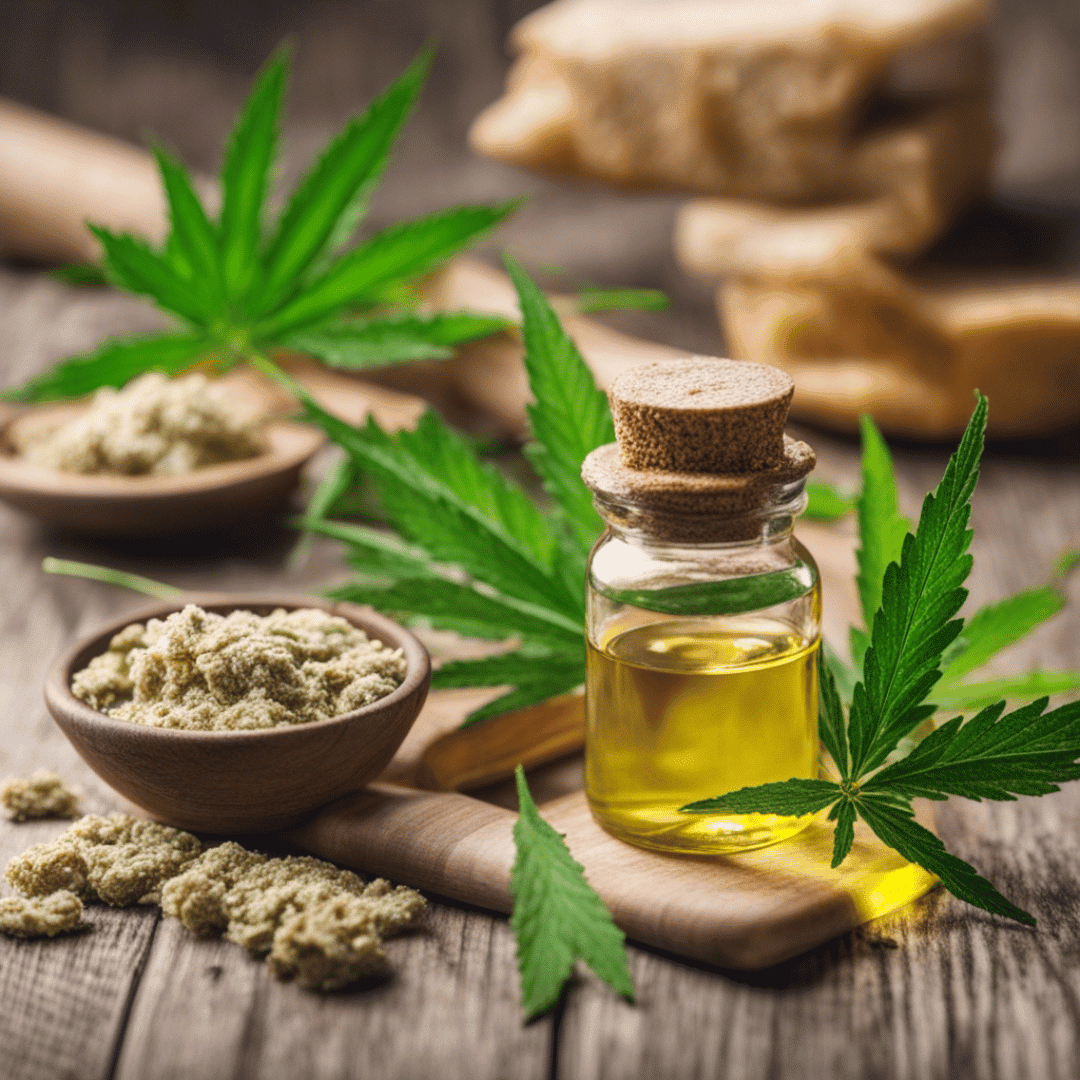A Step-by-Step Guide: How to Make CBD Infused Oil at Home
Written by Trevor

Introduction: Understanding the Benefits of CBD Infused Oil
CBD infused oil has gained significant attention in recent years due to its potential health benefits. Derived from the cannabis plant, CBD (cannabidiol) is a non-psychoactive compound that is known for its therapeutic properties. When combined with carrier oils such as coconut or hemp seed oil, it creates CBD infused oil that can be used for various purposes.
One of the key benefits of CBD infused oil is its potential to alleviate symptoms associated with various health conditions. Research suggests that CBD may have anti-inflammatory, analgesic, and anxiolytic properties, making it a promising option for managing chronic pain, anxiety disorders, and even epilepsy.
Moreover, homemade CBD infused oil allows individuals to have more control over the ingredients and dosage. By using high-quality CBD extracts and selecting a carrier oil that suits their preferences, individuals can tailor their own CBD infused oil to meet their specific needs.
In this section, we will explore the different health benefits associated with CBD infused oil. (Looking for easy recipes to add your fresh CBD oil to? CLICK HERE!). From its potential role in pain management to its impact on mental well-being, we will delve into the scientific evidence supporting these claims. Additionally, we will discuss how homemade CBD infused oils can be incorporated into daily routines for maximum effectiveness.
Whether you are curious about the potential benefits of CBD infused oil or considering incorporating it into your wellness routine, this section aims to provide you with valuable insights and information on this increasingly popular natural remedy.
Step 1: Gather the Ingredients and Supplies
When it comes to making your own CBD oil at home, gathering the necessary ingredients and supplies is the first step. To ensure a successful process, you will need CBD flower or hemp buds as the main ingredient. These can be purchased from reputable suppliers or grown yourself if legal in your area.
In addition to the CBD flower or hemp buds, you will also need a carrier oil such as coconut or olive oil. The carrier oil acts as a base for extracting the beneficial compounds from the plant material.
To prepare the CBD flower or hemp buds for extraction, a grinder is essential. This will help break down the plant material into smaller pieces, allowing for better extraction of cannabinoids and other compounds.
Next, you will need a double boiler or slow cooker to heat and infuse the carrier oil with the extracted cannabinoids. This gentle heating process helps release and activate the beneficial compounds without damaging them.
Lastly, to strain out any plant material and obtain a smooth and pure CBD oil, you will need either cheesecloth or a fine mesh strainer. These tools help separate any solids from the liquid oil during the final step of preparation.
By gathering these ingredients and supplies beforehand, you are setting yourself up for success in creating your own CBD oil at home.
Step 2: Decarboxylate the CBD Flower
Decarboxylation is an essential step in the process of preparing CBD flower for consumption. This process involves heating the flower to activate the cannabinoids present in it, making them more bioavailable and effective.
To decarboxylate CBD flower using the oven method, follow these steps:
1. Preheat your oven: Set your oven to a temperature of around 220-240 degrees Fahrenheit (105-115 degrees Celsius). This temperature range is ideal for decarboxylation without causing excessive degradation of cannabinoids.
2. Prepare the CBD flower: Break up the CBD flower into smaller pieces, ensuring that they are evenly spread out on a baking sheet or parchment paper. This will help ensure uniform heat distribution during the decarboxylation process.
3. Bake in the oven: Place the baking sheet with the prepared CBD flower into the preheated oven. Allow it to bake for approximately 30-45 minutes. Keep an eye on it to prevent overcooking or burning.
4. Check for readiness: After the designated time has elapsed, remove a small piece of CBD flower from the oven and allow it to cool slightly. Gently press it between your fingers – if it crumbles easily, then it is likely decarboxylated and ready for use.
Decarboxylation through this oven method helps convert inactive cannabinoids like THCA and CBDA into their active forms (THC and CBD). This activation process enhances their therapeutic potential when consumed orally or used in various products such as oils, tinctures, edibles, and topicals.
Remember to handle decarboxylated CBD flower with care as its potency may be significantly increased compared to raw or unprocessed hemp material.
Step 3: Infuse the CBD into Carrier Oil
In step 3 of the CBD infusion process, it is crucial to infuse the CBD into a carrier oil effectively. This step ensures that the beneficial properties of CBD are properly extracted and incorporated into the carrier oil for later use.
There are a few methods that can be used for this infusion process, with two popular options being using a double boiler or a slow cooker. Both methods involve gentle heating to facilitate the extraction of CBD from the plant material and its infusion into the carrier oil.
When using a double boiler, it is important to maintain a consistent temperature throughout the process. The water in the bottom pot should be heated to a low simmer, ensuring that it does not reach boiling point. This gentle heat helps prevent any degradation of the CBD and preserves its potency.
Similarly, when using a slow cooker, it is essential to set it at a low temperature setting. This allows for gradual heating over an extended period, typically several hours or even overnight. The slow cooking process ensures thorough extraction and infusion without overheating or damaging the CBD.
Time and temperature considerations play a vital role in achieving optimal extraction during this step. It is recommended to infuse the CBD into the carrier oil for at least 2-4 hours on low heat or as per specific recipe instructions. However, longer infusion times can also be beneficial for obtaining higher potency levels.
It’s important to note that different carrier oils may have varying optimal temperatures and infusion times due to their unique properties. Therefore, referring to specific guidelines provided by reputable sources or manufacturers can help ensure successful results.
By following these guidelines and considering time and temperature factors during this step, you can achieve an effective infusion of CBD into your chosen carrier oil while preserving its therapeutic qualities for future use.
Step 4: Strain and Store the CBD Infused Oil
Once you have successfully infused your oil with CBD, it is important to strain out any plant material or impurities before storing it. This step ensures that your final product is smooth and free from any unwanted particles.
To strain the CBD infused oil, you have a couple of options. One method is to use a cheesecloth or fine mesh strainer. Simply place the cheesecloth or strainer over a clean container and carefully pour the infused oil through it. The cheesecloth or strainer will catch any solid particles, allowing only the liquid to pass through.
It is crucial to handle the straining process with care to avoid any spills or contamination. Make sure that your container is clean and sanitized beforehand to maintain the purity of your infused oil.
After straining, you can proceed to store your CBD infused oil properly. Proper storage techniques are essential for maintaining its potency and freshness over time. Here are some tips:
1. Choose an appropriate container: Opt for dark glass bottles or jars with airtight lids. Dark glass helps protect the oil from light exposure, which can degrade its quality.
2. Store in a cool, dark place: Heat and light can accelerate the degradation of CBD compounds in the oil. Keep it away from direct sunlight and store it in a cool area such as a pantry or refrigerator.
3. Avoid air exposure: Oxygen can also affect the potency of CBD over time. Make sure that your container is tightly sealed to minimize air exposure.
4. Label and date: It’s important to label your CBD infused oil with its contents and date of preparation for easy identification and tracking of freshness.
By following these steps for straining and storing your CBD infused oil properly, you can ensure that it remains potent and fresh for longer periods, allowing you to enjoy its benefits whenever needed.
Safety Precautions and Tips for Making CBD Infused Oil at Home
When it comes to making CBD infused oil at home, safety precautions are of utmost importance. Working with heat sources and oils can pose certain risks if not handled properly. In this section, we will discuss some essential safety precautions and tips to ensure a safe and successful process.
Firstly, it is crucial to work in a well-ventilated area. Adequate ventilation helps prevent the accumulation of fumes or vapors that may be released during the heating process. This can be achieved by opening windows or using exhaust fans.
When working with heat sources such as stovetops or hot plates, always exercise caution. Keep flammable materials away from the heat source and never leave it unattended while in use. It is also advisable to have a fire extinguisher nearby as an extra precautionary measure.
Additionally, when handling oils, especially those that are heated, it is important to use appropriate protective gear such as oven mitts or gloves to avoid burns. Hot oils can cause severe skin injuries if they come into contact with unprotected skin.
Dosage considerations are equally important when using homemade infused oils for consumption or topical use. It is crucial to understand the potency of the CBD oil being used and calculate the appropriate dosage accordingly. Start with a low dosage and gradually increase if needed, while closely monitoring any potential side effects.
Furthermore, proper storage of homemade infused oils is essential for maintaining their quality and safety. Store them in dark glass containers away from direct sunlight or excessive heat to prevent degradation.
By following these safety precautions and considering dosage considerations when making CBD infused oil at home, you can ensure a safe and enjoyable experience while reaping the potential benefits of CBD-infused products.
Conclusion: Enjoy the Benefits of Your Homemade CBD Infused Oil!
In conclusion, creating your own CBD infused oil at home offers numerous benefits. By utilizing homemade CBD products, you have full control over the ingredients and can ensure that you are using high-quality, natural remedies. DIY CBD recipes allow you to customize the potency and flavor of your oil to suit your preferences and needs.
Not only does making your own CBD infused oil provide a cost-effective alternative to store-bought options, but it also allows you to have a deeper understanding of the process and ingredients involved. This hands-on approach empowers you to create a product that aligns with your values and desired outcomes.
Furthermore, using natural remedies with CBD oil can offer potential health benefits such as pain relief, reduced anxiety, improved sleep quality, and more. By incorporating homemade CBD infused oil into your wellness routine, you can harness the therapeutic properties of CBD in a way that suits your individual needs.
Remember to consult with a healthcare professional before incorporating any new natural remedies into your routine. With proper guidance and knowledge, you can enjoy the benefits of homemade CBD infused oil while promoting overall well-being in a natural and holistic manner.
Enjoy This Article?
If you enjoyed this article and want to check out our Instagram page for a better look at all products. Sign up for our newsletter and follow our Twitter Page for a more posts like this and exclusive deals








